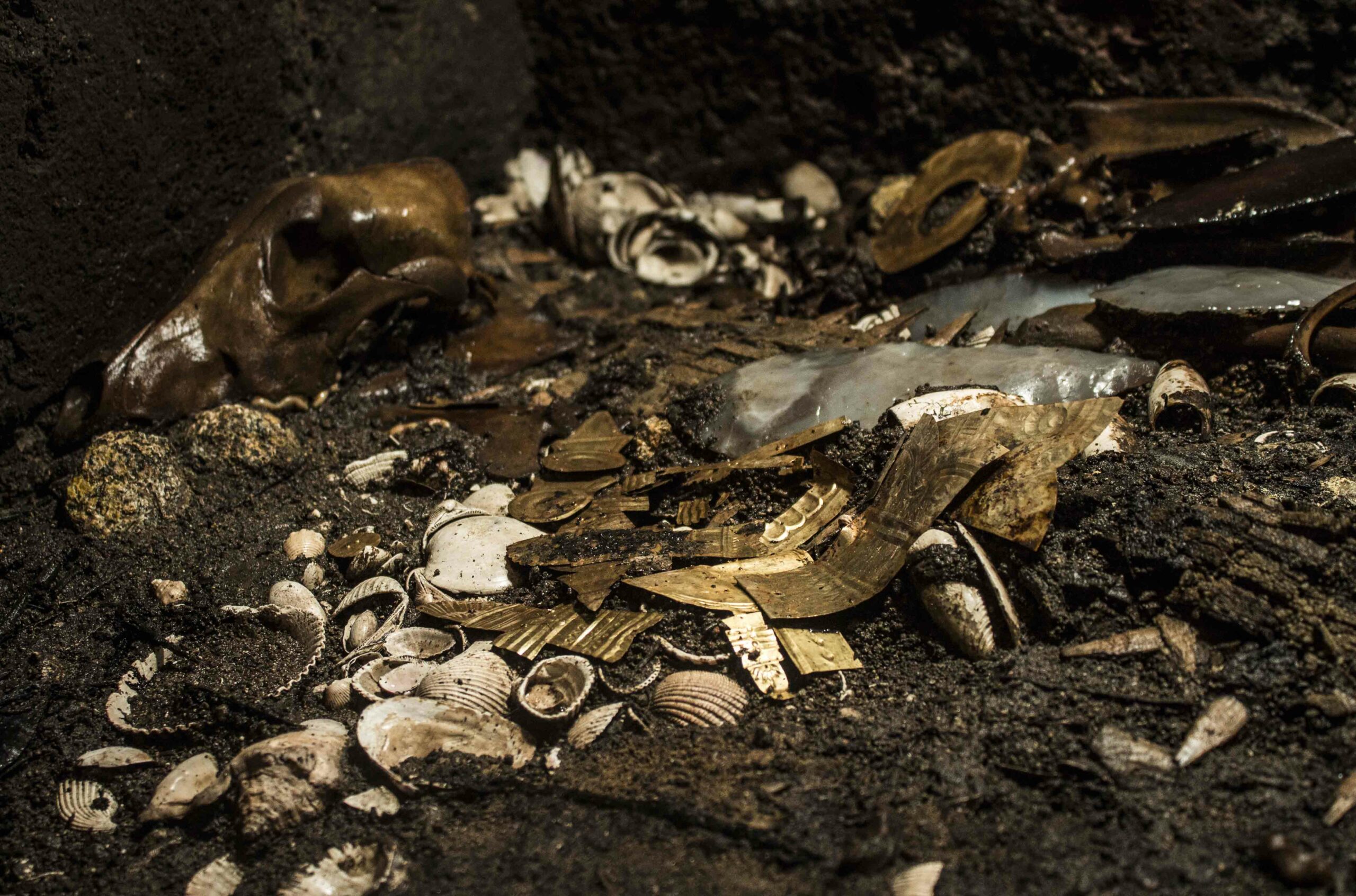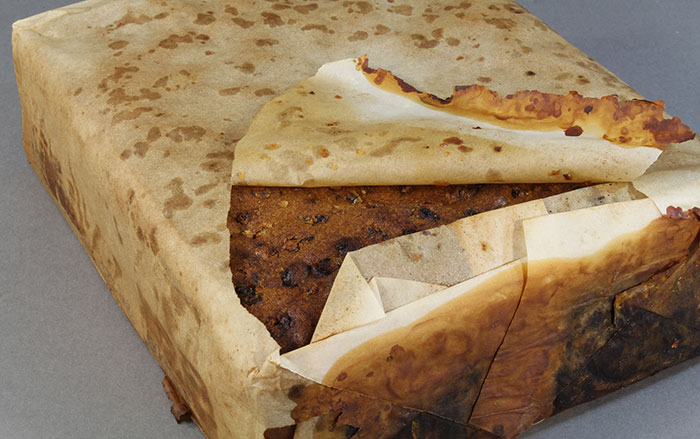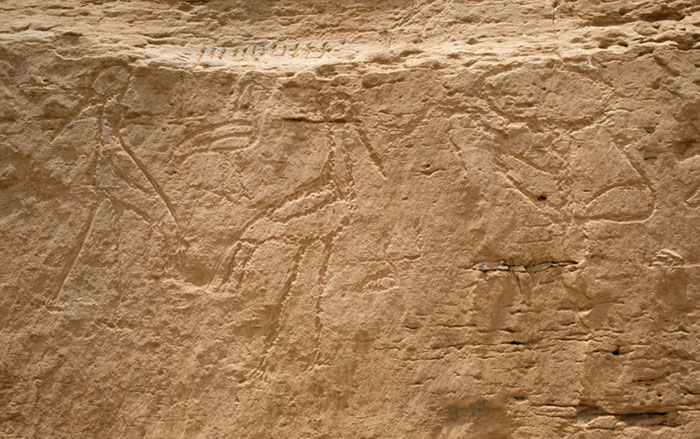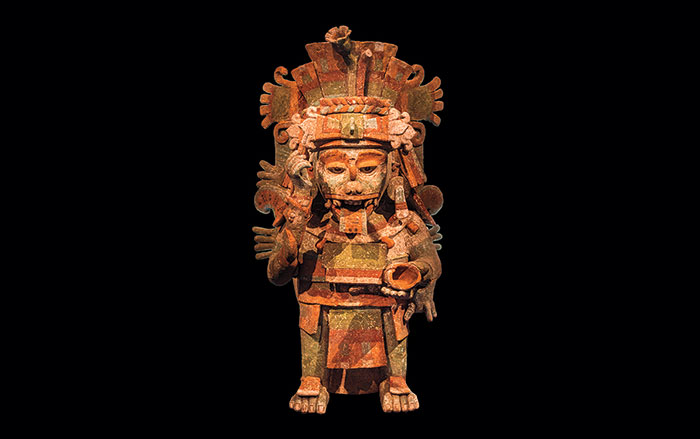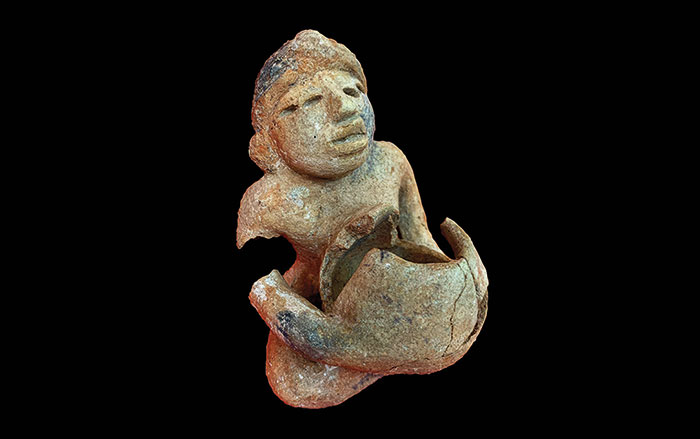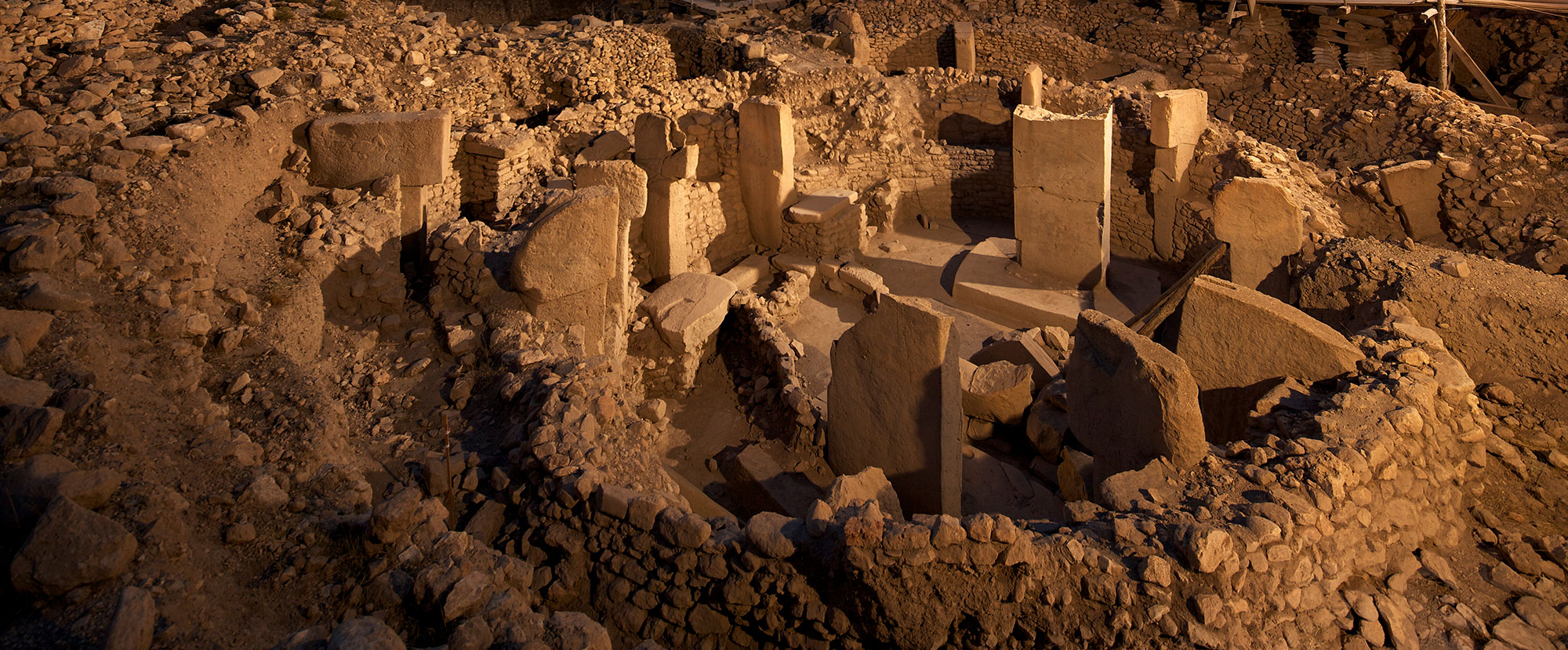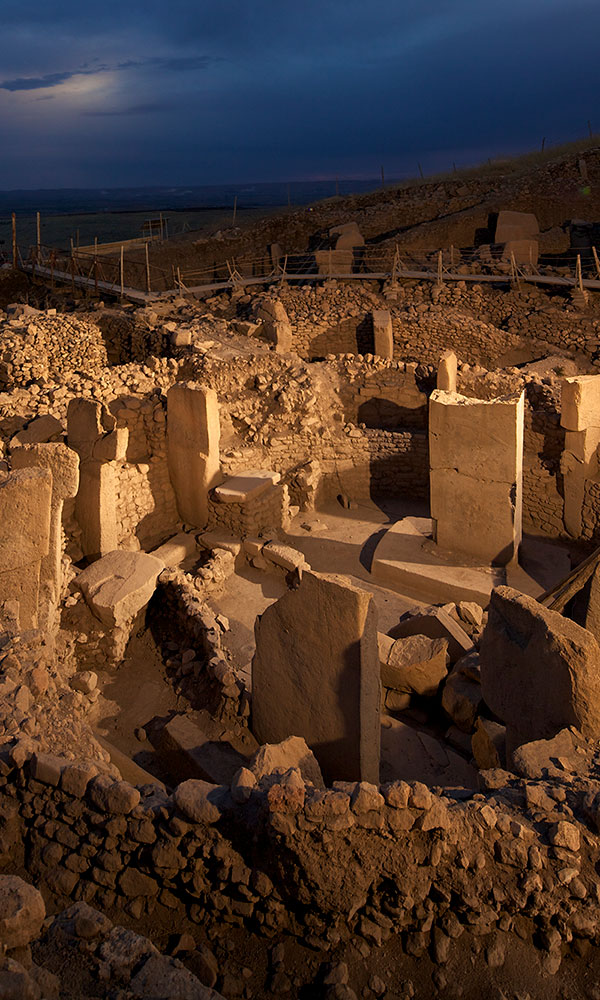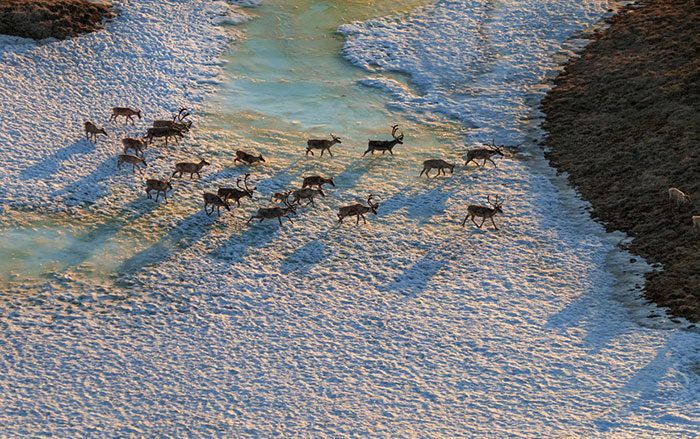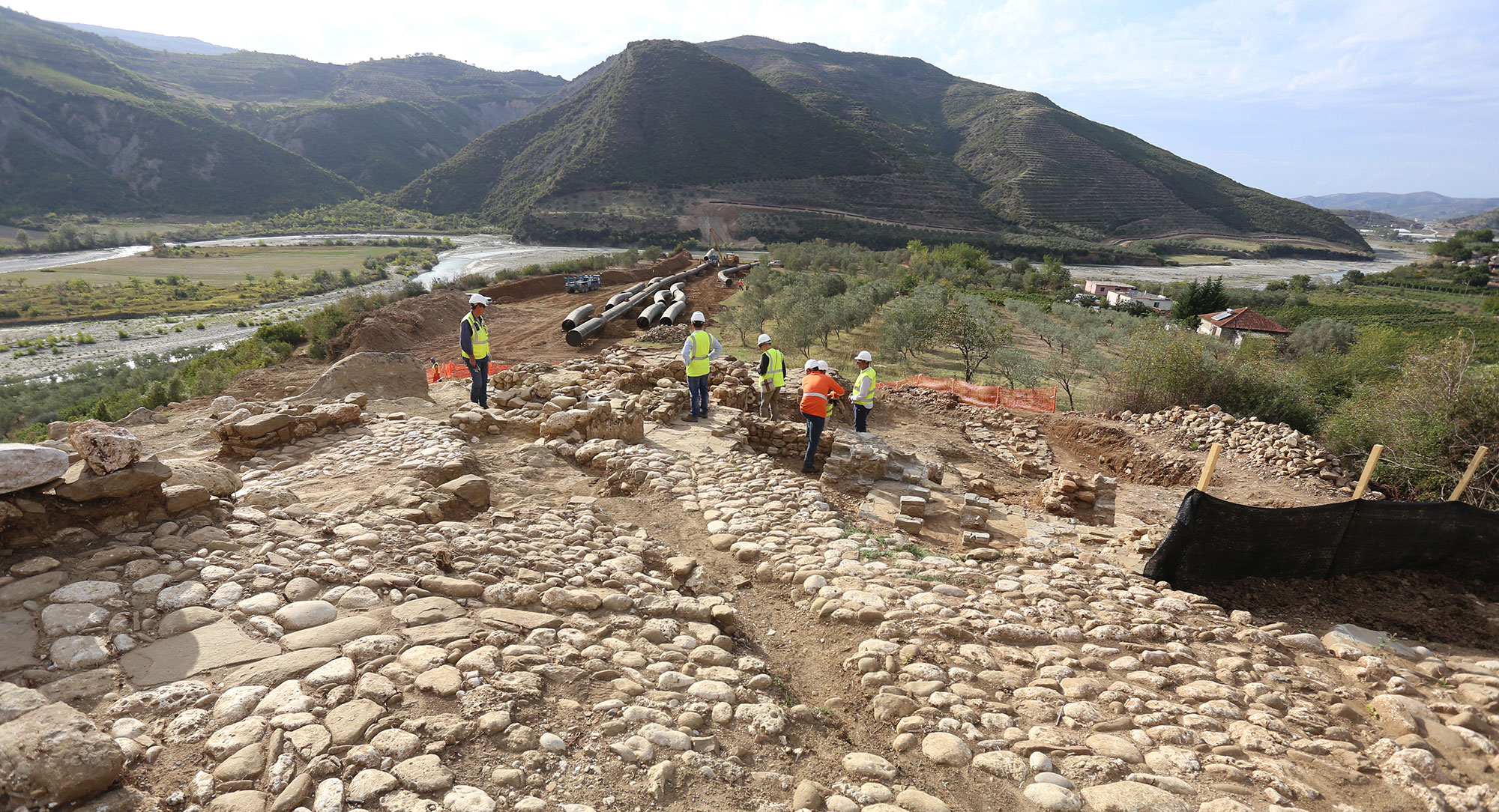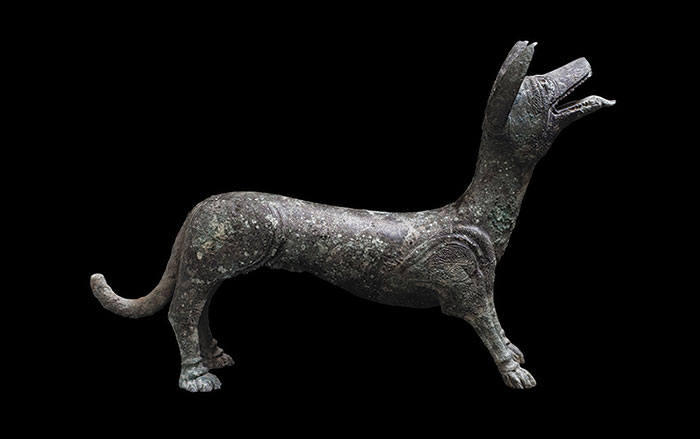Archaeologists excavating at the foot of the Aztecs’ Great Temple, in downtown Mexico City, discovered a dazzling collection of gold artifacts and the skeleton of a juvenile wolf. Occupying a stone box the size of a dishwasher, the gold artifacts are the finest yet excavated at the 40-year-old dig, says lead archaeologist Leonardo López Luján. They include ear and nose ornaments and a piece of body armor known as a pectoral—glittering, stylized versions of attire that were used to decorate the sacrificed wolf, as if the canine were symbolizing a human warrior. The wolf’s head faced west, signaling that it was “the companion of the sun, after the sunset, during its journey to the underworld,” says López Luján. The offering was buried during the reign of Ahuitzotl (1486–1502), a time of war and great imperial expansion for the Aztecs.
